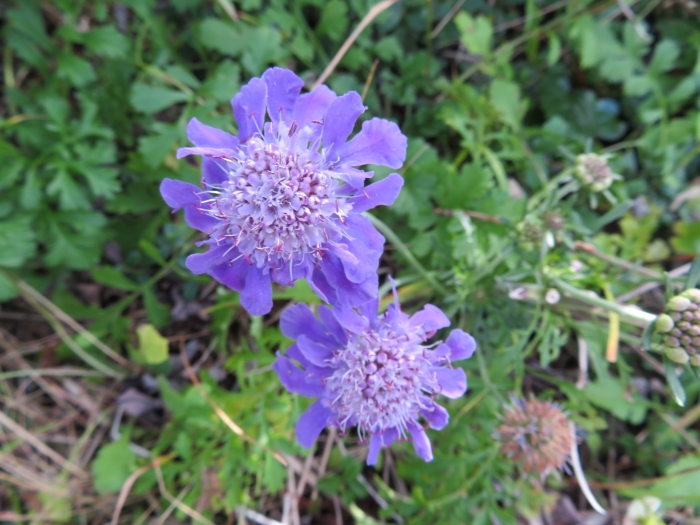Japanese Scabious
(Scabiosa japonica)
Japanese Scabious (Scabiosa japonica)
/
/

belvedere04
CC BY 4.0
Image By:
belvedere04
Recorded By:
Copyright:
CC BY 4.0
Copyright Notice:
Photo by: belvedere04 | License Type: CC BY 4.0 | License URL: http://creativecommons.org/licenses/by/4.0/ | Rights Holder: belvedere04 | Publisher: iNaturalist | Date Created: 2018-09-12T15:13:06-07:00 |

















Estimated Native Range
Summary
Scabiosa japonica, commonly known as Japanese Scabious, is a biennial or short-lived perennial herb native to grasslands and open woodlands in central and southern Japan. It typically grows to a height of 4 to 20 inches. The plant features deeply lobed leaves and round flower heads that bloom in summer, with colors ranging from pale lavender to deep blue. The flowers are notably attractive to pollinators such as bees and butterflies.
Japanese Scabious is valued for its charming flowers and ability to attract beneficial insects to the garden. It is often used in border plantings, cottage gardens, and as part of pollinator-friendly landscapes. This species prefers well-drained soil, moderate watering, and thrives in full sun to part shade. Cultivars like ’Blue Note’, ’Blue Star’, ’Blue Diamonds’, ’Ritz Blue’, and ’Ritz Rose’ offer gardeners a variety of color options. While generally easy to maintain, Scabiosa japonica can be susceptible to powdery mildew and should be monitored for this disease. Deadheading spent flowers can encourage additional blooming and maintain plant vigor.CC BY-SA 4.0
Japanese Scabious is valued for its charming flowers and ability to attract beneficial insects to the garden. It is often used in border plantings, cottage gardens, and as part of pollinator-friendly landscapes. This species prefers well-drained soil, moderate watering, and thrives in full sun to part shade. Cultivars like ’Blue Note’, ’Blue Star’, ’Blue Diamonds’, ’Ritz Blue’, and ’Ritz Rose’ offer gardeners a variety of color options. While generally easy to maintain, Scabiosa japonica can be susceptible to powdery mildew and should be monitored for this disease. Deadheading spent flowers can encourage additional blooming and maintain plant vigor.CC BY-SA 4.0
Plant Description
- Plant Type: Herb
- Height: 1.5-2 feet
- Width: 1-1.5 feet
- Growth Rate: Moderate
- Flower Color: Purple, Blue
- Flowering Season: Summer, Fall
- Leaf Retention: Deciduous
Growth Requirements
- Sun: Full Sun, Part Shade
- Water: Medium
- Drainage: Medium, Fast
Common Uses
Border Plant, Butterfly Garden, Groundcover, Low Maintenance, Potted Plant
Natural Habitat
native to grasslands and open woodlands in central and southern Japan
Other Names
Common Names: Japanese Scabiosa, Japanese Pincushion Flower
Scientific Names: , Scabiosa japonica, Lomelosia japonica var. alpina, Scabiosa comosa var. japonica, Scabiosa fischeri f. pubescens, Scabiosa fischeri var. japonica, Scabiosa japonica f. albiflora, Scabiosa japonica f. littoralis, Scabiosa japonica var. acutiloba, Scabiosa japonica var. alpina
GBIF Accepted Name: